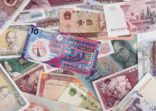Sarah Lien, Eastspring Investments
“We’re looking at launching a dedicated ESG strategy under the quant team and that is a top priority for the team,” she told FSA during a recent visit in Hong Kong.
Lien did not give a timeline for the product launch, but said it is under development.
She said that it took the firm about one year to develop another quant fund, the firm’s Asia-Pacific (ex-Japan) low volatility product, before it launched in 2013.
“We are still in those early stages for the ESG strategy.”
Incorporating ESG in the investment process is new for Eastspring. In March, it signed the UN-supported Principles for Responsible Investment (PRI). At the time, the firm was in the process of implementing a formal and consistent ESG focus across all asset classes, research and investment decision-making.
Lien noted that the firm has not yet incorporated ESG factors in any of its quantitative strategies. However, it has started to use Sustainalytics data to incorporate ESG scoring for all of the firm’s non-quant portfolios.
Eastspring has been one of the most active managers this year in terms of developing products and expanding in the region.
For example, the firm is planning to launch ESG- and China-focused multi-asset strategies, Colin Graham, chief investment officer for multi-asset solutions, told FSA in June.
Eastspring also secured a private fund management (PFM) licence in China last month after it set up a Shanghai-based investment management wholly-foreign owned enterprise (IM WFOE) in the mainland in March. It now has eight people.
Also last month, the firm finalised a 65% stake acquisition of Bangkok-based TMB Asset Management, which manages around $13bn) in assets, from TMB Bank Public Company.
Low-volatility demand?
Turning to the firm’s low volatility quantitative strategy, Lien believes that there is an increasing interest in its Asia-Pacific (ex-Japan)-focused strategy.
“Last year, nobody was interested in this strategy. It was very hard to sell. We were in a growth market and volatility didn’t matter.
“But this year, it’s a whole different picture and people care deeply about volatility. In February to March, all of a sudden people got scared and wanted to protect their money,” she said.
Low volatility strategies often underperform the broader market during up markets. During the market rally In 2017, the MSCI AC Asia-Pacific (ex-Japan) returned 37.32%, while the MSCI AC Asia-Pacific (ex-Japan) Minimum Volatility Index’ performance was lower at 27.4%, according to FE data.
However, the opposite is true in volatile markets. Although the Asia-Pacific (ex-Japan) minimum volatility index returned -5.32% this year, the drawdown is not as huge when compared to the broader market’s -12.54% performance.
Eastspring manages around $2bn in its Asia-Pacific low volatility strategy, which includes the Sicav fund and segregated mandates for institutional investors, according to Lien. The Sicav fund version, which was launched in November 2016, has around $307m in assets, according to its fund factsheet.
The quant team also manages other strategies, including a global low volatility strategy and multi-factor quant strategies, according to Lien.
Investment process
Eastspring’s Asian Low Volatility Equity Fund looks at four main criteria when filtering a universe of around 3,500 stocks: valuations, quality, dividend yield and analyst sentiment, according to Lien.
Under the filtering process, the stocks with the most expensive valuations and those that have bad debt-to-equity and profitability scores are excluded. Stocks with the worst analyst sentiment, which is based on sell-side research, are also excluded. Stocks should also have a dividend yield above the country level average, Lien noted.
This leaves about 300 companies, which are then put through an “optimiser”. The optimiser tries to identify a portfolio that maximises a return given a level of risk, according to Lien, adding that fund needs to be diversified across all markets in the region.
“If we didn’t use the optimiser and we just pick the lowest volatility securities in the portfolio, you will end up with a portfolio that is all from Malaysia or Taiwan and all telecoms and utilities.”
The portfolio has around 120 positions, which is rebalanced on a quarterly basis, she added.
The Eastspring Asian Low Volatility Equity Fund (Sicav) versus its benchmark index and the broader market since its launch.

Source: FE Analytics. Note: All fund and index NAVs have been converted to US dollars.

















